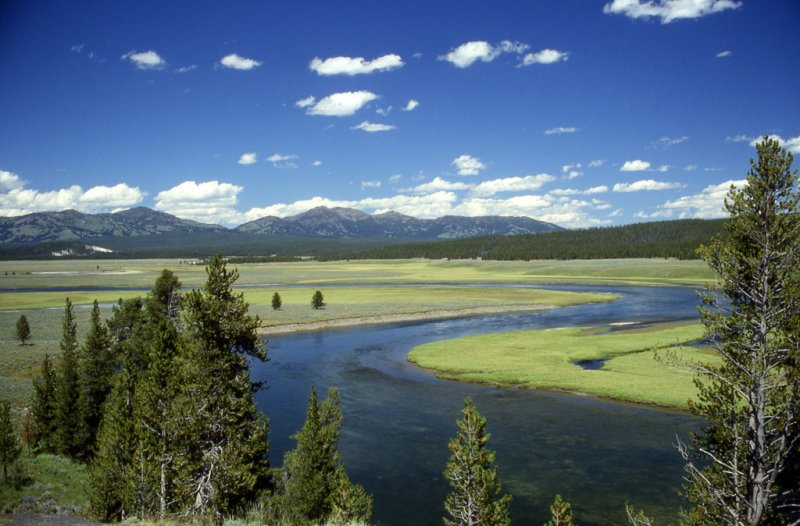The northeastern part of the Yellowstone Caldera, with the Yellowstone River flowing through Hayden Valley and the caldera rim in the distance. A caldera is a bowl-like volcanic feature usually formed by the collapse of land following a volcanic eruption. Credit: National Park Service.
PULLMAN, Wash., April 30 (UPI) -- Yellowstone's supervolcano has erupted more frequently but with less violence than previously estimated, U.S. researchers say.
The biggest Yellowstone eruption, creating the 2-million-year-old Huckleberry Ridge deposit, was actually two different eruptions at least 6,000 years apart, Washington State University reported Monday.
Before the researchers determined the one eruption was in fact two, it had been estimated as the fourth largest known to science.
"The Yellowstone volcano's previous behavior is the best guide of what it will do in the future," WSU researcher Ben Ellis said. "This research suggests explosive volcanism from Yellowstone is more frequent than previously thought."
The scientists say the output of the first eruption was 644 cubic miles, roughly 12 percent less than previously thought, and then a second eruption of 85 cubic miles took place more than 6,000 years later.
By comparison, the 1980 eruption of Mount St. Helens produced 0.26 of a cubic mile of ash.
That first Yellowstone eruption still deserves to be called "super," the researchers emphasized, as it is one of the largest to ever occur on Earth and darkened the skies with ash from southern California to the Mississippi River.
The U.S. Geological Survey says the term "supervolcano" implies a volcanic center that has had an eruption of magnitude 8 on the Volcano Explosivity Index, meaning the measured deposits for that eruption is greater than 240 cubic miles.















